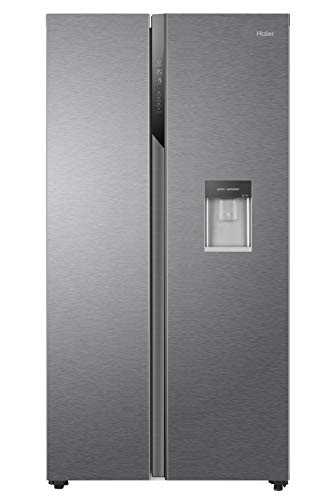Understanding Fridges and Freezers: The Essential Kitchen Appliances
Fridges and freezers are 2 of the most vital appliances in contemporary cooking areas. These home appliances serve a crucial role in food preservation and waste reduction by ensuring that disposable products stay fresh and safe for usage. This post dives into the different types of fridges and freezers, their performances, and essential factors to consider for selection and upkeep.
Kinds of Refrigerators
The marketplace provides a variety of refrigerator types, each created to fulfill different consumer needs. Below is a list of the most common types of fridges:
Top-Freezer Refrigerators
- Most common type.
- Freezer compartment is situated above the refrigerator area.
- Generally more inexpensive and energy-efficient.
Bottom-Freezer Refrigerators
- Freezer lies at the bottom.
- Enables much easier access to fresh items at eye level.
- Typically includes pull-out drawers for much better organization.
Side-by-Side Refrigerators
- Refrigerator and freezer areas are surrounding.
- Ideal for narrow kitchen areas and permits simple access to both compartments.
- Often comes with water and ice dispensers.
French Door Refrigerators
- Combines a bottom freezer with double doors at the top.
- Deals adequate storage and trendy styles.
- Frequently consists of functions like temperature-controlled drawers.
Compact Refrigerators
- Smaller sized size ideal for minimal areas.
- Typically used in dorm rooms, studio apartments, or as secondary fridges.
Table 1: Comparison of Refrigerator Types
| Type | Advantages | Downsides | Normal Size |
|---|---|---|---|
| Top-Freezer | Budget friendly, energy-efficient | Less practical access to the freezer | 14-30 cu. ft. |
| Bottom-Freezer | Easier access to fresh food | Freezer can be harder to organize | 19-30 cu. ft. |
| Side-by-Side | Easy gain access to, water/ice dispenser | Narrow vs. storage area | 22-30 cu. ft. |
| French Door | Trendy, large, organized | More expensive | 20-30+ cu. ft. |
| Compact | Space-saving, portable | Minimal storage | 1.7-5.5 cu. ft. |
Types of Freezers
Freezers are an equally important device for food conservation. They can be found in numerous styles created to fit various home requirements. Consider the following types:
Upright Freezers
- Run like a basic refrigerator with vertical storage.
- Much easier to arrange with shelves and compartments.
Chest Freezers
- Big, horizontal design generally using more storage area.
- Maintains temperatures much better during power failures.
- More energy-efficient than upright models.
Portable Freezers
- Compact systems ideal for outdoor activities or small areas.
- Typically utilized for camping journeys or as temporary storage.
Table 2: Comparison of Freezer Types
| Type | Advantages | Drawbacks | Typical Size |
|---|---|---|---|
| Upright Freezer | Easier to organize | Less energy-efficient, more floor area | 5-20 cu. ft. |
| Chest Freezer | Holds more products, energy-efficient | Harder to arrange | 5-25 cu. ft. |
| Portable Freezer | Compact and flexible | Limited storage capacity | 1-10 cu. ft. |
Key Features to Consider
When choosing a fridge or freezer, customers need to keep in mind several features that can enhance performance:
- Energy Efficiency: Look for designs with the ENERGY STAR accreditation to save on electricity expenses.
- Storage Capacity: Evaluate storage needs based upon household size and consuming routines.
- Temperature Control: Some appliances provide digital controls for exact temperature settings.
- Adjustable Shelving: Customizable shelving enables optimal company.
- Water and Ice Dispenser: Offers convenience however can take up important area inside.
- Noise Level: Sound scores can affect convenience, specifically in open-concept homes.
Pros and Cons of Having a Fridge and Freezer
While fridges and freezers are essential technologies, they also have particular benefits and disadvantages:
| Pros | Cons |
|---|---|
| Protect food life expectancy and lower waste | Need routine maintenance |
| Allow bulk purchasing and meal prepping | Can be costly to acquire and run |
| Deal benefit and quick access to food | Inhabit significant kitchen area space |
Upkeep Tips
To ensure durability and optimal efficiency of fridges and freezers, consider the following upkeep suggestions:
- Regular Cleaning: Clean the interior and outside occasionally to prevent accumulation of dirt and bacteria.
- Examine Seals: Inspect door seals routinely for leakages to maintain performance.
- Temperature Settings: Keep the fridge at 34-38 ° F and the freezer at 0 ° F for optimum food conservation.
- Thaw as Needed: Chest freezers need to be defrosted regularly to keep efficiency.
- Clear Air Vents: Ensure that air flow isn't blocked to enhance energy efficiency.
FAQs About Fridges and Freezers
Q1: How long can food be saved in a freezer? Rudolf Rinard : Most foods can be kept in a freezer for numerous months. Meats and poultry often last 4-12 months, while vegetables can last approximately 8-12 months.
Q2: How frequently ought to I clean my fridge and freezer?A: It is suggested to clean your fridge and freezer every 3 to 6 months, or as required when spills happen. Q3: Can I put hot food directly in the fridge?A: It is recommended to cool hot food to space temperature before putting it in the fridge to avoid
raising the temperature level inside the appliance. Q4: Why is my fridge running constantly?A: This could be due to a malfunctioning thermostat, blocked coils, or door seals that aren't working effectively. Fridges and freezers are vital
properties to modern-day households, supplying important services for food storage and preservation.
Understanding the different types, functions, and upkeep requirements can help consumers choose the right appliances for their needs and maximize their performance. Welcoming energy-efficient designs not just supports sustainable practices however likewise adds to substantial cost savings on utility expenses, making notified choices more important than ever.

